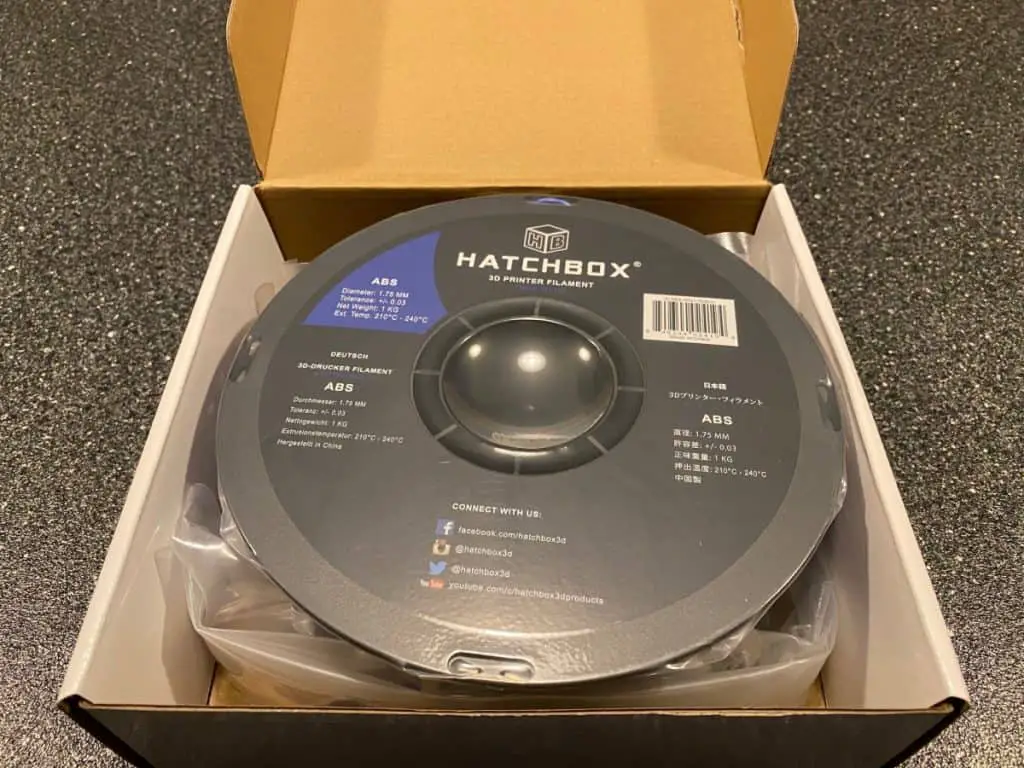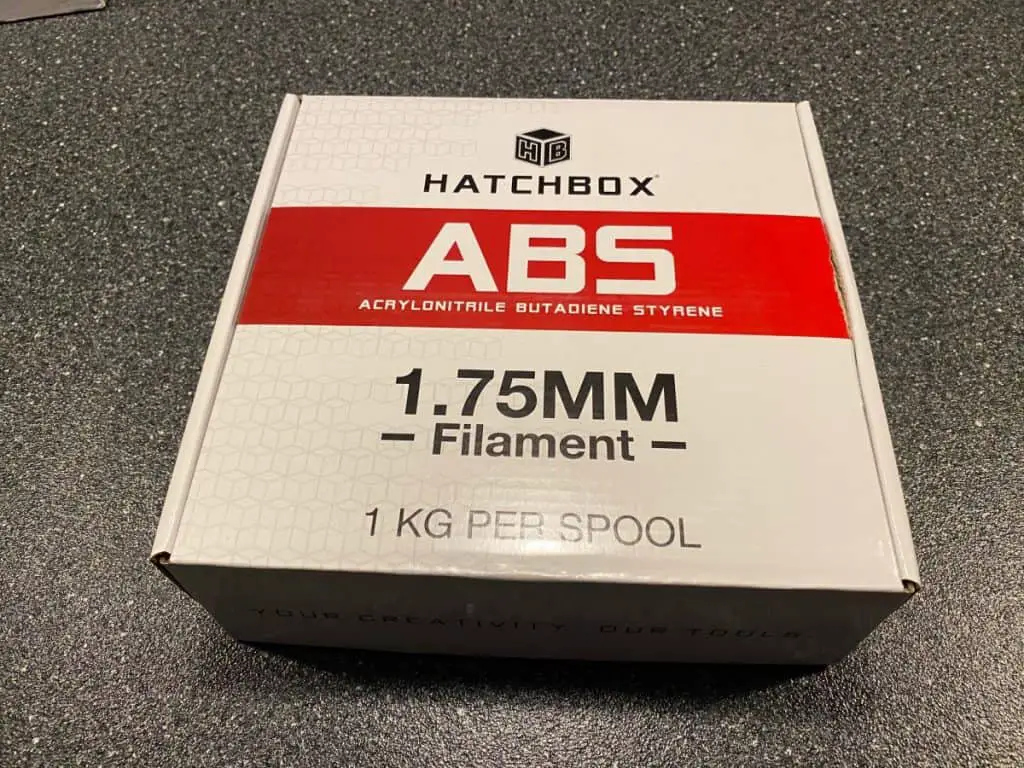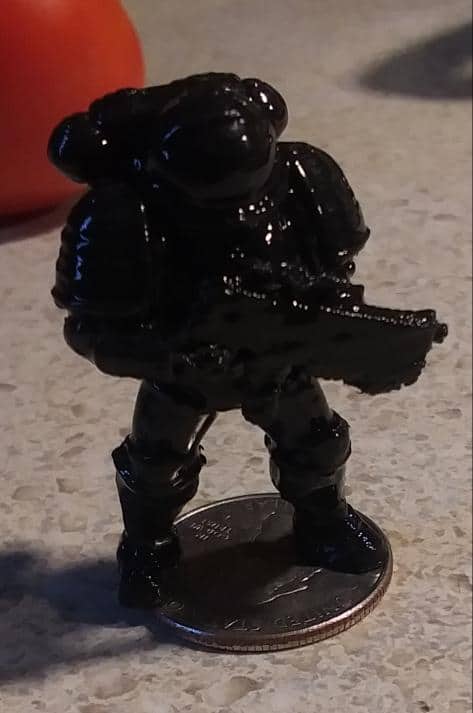ABS is one of the most popular 3D printing filaments on the market. It’s strong, durable, and relatively easy to 3D print. However, ABS has some properties that make it toxic in some circumstances, which might make it unsafe for printing indoors.
It is safe to print ABS indoors if you have proper ventilation. When ABS is heated, it emits fumes, called VOCs, that can be harmful if inhaled in large quantities. Therefore, it’s crucial to have good ventilation to prevent the fumes from building up to dangerous levels.
Read on for more information on ventilating for ABS printing and tips for safely printing indoors. I’ll teach you how to make the perfect setup for printing with ABS and help you understand how to protect yourself from fumes.

The Dangers of Printing With ABS
ABS, or Acrylonitrile Butadiene Styrene, is a type of plastic commonly used in 3D printing. When handled in its solid form, ABS is not a health hazard, unlike some other plastics.
However, as this 2017 study points out, ABS fumes (VOCs or volatile organic compounds) can be dangerous if inhaled, especially for prolonged periods.
Here are a few of the side effects of exposure to ABS fumes:
- Eye, nose, and throat irritation
- Dizziness
- Nausea
- Headaches
- Allergic reactions
The following video describes some of the harmful gasses and particles ABS fumes contain:
For this reason, it is generally not recommended to print with ABS indoors without adequate ventilation.
Tip: If you experience any of the mentioned symptoms while printing with ABS, stop printing immediately and open a window or door for ventilation.
How Do You Ventilate for ABS Printing?
As I mentioned, ventilation is crucial in preventing the buildup of harmful ABS fumes. But how do you do it?
Here are a few practical ways to ventilate for ABS printing:
- Use a 3D printer with an enclosed build chamber.
- Use a fan to create airflow around the print bed.
- Install a filtration unit.
- Open the windows.
- Use a room exhaust fan.
Here are more details on the mentioned techniques:
1. Use a 3D Printer With an Enclosed Build Chamber
One way to ensure proper ventilation when printing with ABS is to use a 3D printer with an enclosed build chamber. Sealing off the build chamber helps contain any fumes released during the printing process, besides helping to regulate the temperature.
Caveat: There are a few downsides to using an enclosed build chamber. First, it can be more expensive than printing with an open printer. Second, the enclosure can make monitoring the print progress and making any necessary adjustments more challenging. However, if you are printing with ABS indoors, an enclosed build chamber is worth considering.
2. Use a Fan To Create Airflow Around the Print Bed
Another way to improve ventilation when printing with ABS is to use a fan to create airflow around the print bed. Doing this can help prevent any fumes released during the printing process from building up in the area. Besides, using a fan will also help to cool the print bed, which is essential for preventing warping in ABS.
3. Install a Filtration Unit
If you don’t have an enclosed build chamber, another option is to install a filtration unit. Filtration units help remove harmful particles from the air, including ABS fumes. There are a few different types of filtration units available on the market, so you’ll need to research to find one right for your needs.
If you need a quality filtration system, I recommend this Makergadgets 3D Printer Air/Fume Purification System (from Amazon.com). Using a filter like this is an affordable and effective way to remove harmful particles from the air in your 3D printing area, making it safer to print indoors. As a bonus, it’ll keep your air cleaner, even when you are not 3D printing.
Pro Tip: Be sure to regularly replace the filters on your filtration unit to ensure that it works correctly.
4. Open the Windows
If you don’t have an enclosed build chamber or a filtration unit, another option is to open the windows. Increasing airflow will help ventilation and allow fresh air into the room. However, keep in mind that this may not be the best option in colder weather since the temperature may increase the chances of warping in your ABS.
Note: If you open the windows, turn on a fan to help circulate the air.

5. Use a Room Exhaust Fan
You might also want to use a room exhaust fan when printing with ABS. This type of fan helps remove fumes and other particles from the air, making it a good choice for improving ventilation.
Most notably, it helps eliminate the fumes at the source, which is the print bed. Room exhaust fans come in various sizes and styles, so choose the right one for your needs.
3D Printing Safety Tips
As I’ve mentioned, having proper ventilation is a crucial safety measure you need to take when 3D printing. However, that’s not all! You must observe additional safety guidelines to protect yourself, your loved ones, and your printer.
Here are a few other tips to help you stay safe while 3D printing:
Wear a Respirator, Gloves, and Goggles
Before starting your 3D printer, it’s essential to wear the proper safety gear, including gloves, a respirator, and eye protection. These items will protect you from any harmful particles released during printing.
For instance, a respirator protects you from inhaling harmful fumes, while gloves and goggles help protect your skin and eyes from contact with hot printer parts, filaments, or chemicals.
Invest in a Fire Extinguisher
Another safety tip is to invest in a fire extinguisher. Storing fire prevention tools nearby is especially important when using flammable filaments, such as ABS. Having a fire extinguisher on hand will help put out any fires that may occur quickly.
Besides, it’s also a good idea to have a fire extinguisher in your home, even if you don’t own a 3D printer.
Never Leave Your Printer Unattended
It’s important never to leave your 3D printer unattended while it’s running. If you need to leave the room for any reason, be sure to turn off the printer first. Doing this will help prevent any accidents while you’re away.
Also, young children or pets may touch or play with the printer while it’s running, so it’s vital to turn it off and store it in a safe place when you’re not using it.
Avoid Touching the Hot Parts of the Printer
Another safety tip is to avoid touching the hot parts of the printer. The build platform and extruder nozzle can get extremely hot during printing, so it’s important to let them cool down completely before touching them.
Also, be sure to wear gloves when handling any hot parts of the printer. Otherwise, you could burn yourself.
Keep Your Printer Clean
It’s also essential to keep your 3D printer clean. Over time, dust and other particles can build up inside the printer, which can cause problems with the printing process.
To clean your printer, you can use compressed air to blow out any dust or debris. You can also use a damp cloth to wipe down the printer’s exterior.
Additionally, it’s good to clean the build platform and extruder nozzle regularly. Doing this will help prevent any buildup of residue, which can cause problems with the printing process.
Keep Children and Pets Away From the Printer
Another safety tip is to keep children and pets away from the printer. 3D printers can be dangerous, so it’s essential to keep them out of reach of young children or pets.
If you have young children in your home, it’s good to store the printer safely, such as in a locked cabinet.
Use Caution When Handling Newly Printed Objects
Finally, it’s essential to use caution when handling newly printed objects. Some materials, such as ABS, can release harmful fumes as they cool.
To avoid exposure to these fumes, let the object cool down completely before handling it. Besides, newly printed models are usually hot to the touch, so it’s essential to use caution when handling them.

Follow Manufacturer Safety Guidelines
In addition to following the safety tips above, follow the manufacturer’s safety guidelines to the letter. Each 3D printer is different, so you must read the manual and familiarize yourself with the safety features of your particular model.
In addition, remember that filaments each have unique safety concerns. So, note what filaments you use and check out the potential fumes they may release before starting the printing process.
By following manufacturer guidelines, you make your 3D printing experience safe and enjoyable.
Related Articles
- Is It Safe to 3D Print Indoors?
- Is PLA Toxic When Burned? Facts and Safety Info
- Does PETG 3D Printing Create Toxic Fumes?
- All About 3D Printer Plastic
Final Thoughts
Although it’s safe to print ABS indoors, you must ensure that your room has proper ventilation. Inhaling printer fumes from ABS poses several health risks, including eye, nose, and throat irritation. It may also cause dizziness, headaches, and allergic reactions.
There are a few ways to improve ventilation when printing with ABS, such as using an enclosed build chamber, installing a filtration unit, or using a room exhaust fan. Choose the best option for you to ensure proper ventilation and a safe printing environment.
Make sure you check out our YouTube channel, and if you would like any additional details or have any questions, please leave a comment below or join us on Discord. If you liked this article and want to read others click here.
